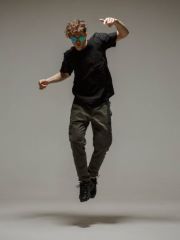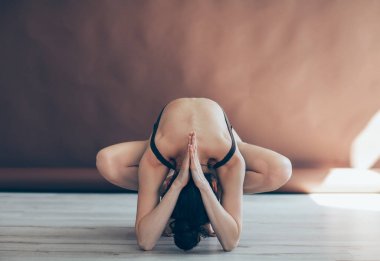| Back to Back Issues Page | |||
 |
|||
|
2024 dancing kickstart! Contemporary dance trends (2013-23), Issue #33 January 06, 2024 |
|||
| Hi there! The Dance Thinker Issue # 33, January 6, 2024
Hello and happy new 2024, dear dancing colleagues! I started this year with a great feeling of wanting a fresh restart. Therefore, I decided to make a summary of what has happened in the last decade in our field of contemporary dance. This has the intention of wrapping up ideas and rethinking new purposes and orientations. From (around) 2013-2023, the field has grown, diversified, and nothing short of amazed us, continually pushing the boundaries of artistic creativity and technical prowess. So, find a taste of what we’ve seen around the world and in my home country (Colombia), in the article below...
CONTEMPORARY DANCE TRENDS OF THE LAST DECADE (2013-2023)
Our sections about contemporary dance history and techniques have a good amount of information to expand the reading of today's article. Find those lectures through the links below. Contemporary dance techniques.
https://www.contemporary-dance.org/The_Dance_Thinker-contemporary-dance-trends.html
We have: - A page for contemporary dance announcements in which you can post your news about workshops, auditions, performances, meetings or any current, related items (it's free). - A contemporary dance blog where you can find important updated information and that will automatically distribute what you post in the announcements page to facebook, twitter, instagram and all subscribers to the site’s RSS feed. - A worldwide contemporary dance directory of schools, companies, scholarships, festivals and related websites to which you can also submit your contact information. - A forum for asking dance questions. - Several pages in which you can participate with contributions like articles, reviews, questions, or comments. - An archive for THE DANCE THINKER back issues, where you can always revisit precedent issues from our e-zine. - A contact page through which you can address me directly if you have questions, ideas, wishes, suggestions or comments.
 Hello and happy new 2024, dear dancing colleagues! I started this year with a great feeling of wanting a fresh restart. Therefore, I decided to make a summary of what has happened in the last decade in our field of contemporary dance. This has the intention of wrapping up ideas and rethinking new purposes and orientations. From (around) 2013-2023, the field has grown, diversified, and nothing short of amazed us, continually pushing the boundaries of artistic creativity and technical prowess. So, here’s a taste of what we’ve seen around the world and in my home country (Colombia)…
Hello and happy new 2024, dear dancing colleagues! I started this year with a great feeling of wanting a fresh restart. Therefore, I decided to make a summary of what has happened in the last decade in our field of contemporary dance. This has the intention of wrapping up ideas and rethinking new purposes and orientations. From (around) 2013-2023, the field has grown, diversified, and nothing short of amazed us, continually pushing the boundaries of artistic creativity and technical prowess. So, here’s a taste of what we’ve seen around the world and in my home country (Colombia)…
Among the different practices, we saw the rise of the fusion of contemporary dance with other dance genders. This trend involves combining contemporary dance techniques with dance forms from different cultures. As the dance society becomes more global, it has sparked a surge of interest in this fusion style. Leading the way is the brilliant Afro-Contemporary dance, blending stunningly intricate West African movements with fluid contemporary style. The modern Alvin Ailey American Dance Theater company has been a root and example of this trend, with choreographers such as Jamar Roberts creating works like "Ode," a tribute to the vibrancy and resilience of the African diaspora. Another grandfather was Eduardo Rivera, with his Cuban masterpiece “Sulkary”, from which the Cuban modern dance technique was born. In the last years, children of this beautiful trend are for example the Colombian group “Sankofa”, leaded by Rafael Palacios, and following him, various great artists that deploy amazing pieces. Fusioned contemporary dance has proven that dance isn't just a single manner of movement, but a synthesis of cultures and traditions, a living, breathing art form that continually evolves. Also, Dance Theatre has gained popularity. This style fuses dance, and mainly drama, to create performances that tell compelling stories. Rooted in German Expressionism, Dance Theatre forges vital connections between emotions, narratives, and movements. The extraordinary Pina Bausch (from Tanztheater Wuppertal) made this trend iconic. However, over the last decade, companies like DV8 Physical Theatre, with their poignant choreography, have commanded worldwide attention. In Colombia, for example, we saw the company “Danza Concierto”, leaded by the choreographer Peter Palacio, performing classics of history or literature, among other stories of daily realities. Also, the company “H3”, leaded by Andrés Avendaño, has created a good number of pieces rooted in stories and emotions, and the company “Al paso Escénico” has shown pieces like “Senectud”, which deploys a strong taste of expressionism. I believe many of the pieces by “El colegio del cuerpo” leaded by Álvaro Restrepo, also fall into this category. Dance Theatre proved that contemporary dance can be an immersive narrative and emotional experience. Next, let's consider the trend of Multimedia Dance. This style integrates contemporary dance techniques with video, digital arts, and other technology to create captivating performances. Dancers interact with projected images, lights, and digital sounds in real time, adding a whole new dimension to the dance. Crystal Pite’s "Body and Soul," performed by the Paris Opera Ballet in 2019, is emblematic of this trend, showcasing a technical discovery that entwines dance with onstage iPhone filming. We also saw the Australian company “Chunky Move”, with pieces like “Glow”, among many other brilliant examples. In Colombia, one of the exponents was Jose Flórez, proposing pieces like “El exilio de mi carne” within the frame of his project “Corpuslab”. A fourth trend in the past decade is Site-Specific Dance, where the performance occurs in and deeply interacts with a particular location, often outdoor or public areas. This technique makes the environment a vital part of the performance. In Colombia, we call this “dance in non-conventional spaces”. One of our very active figures is Maria Claudia Mejía, with her company “Malas Compañías”. The trend has grown so much that now there are contemporary dance festivals around the world that are exclusively oriented towards this form of dancing. Heidi Duckler Dance Theatre is one of the leaders in this style. Their pieces are often community-oriented, making dance more accessible to those who may not frequent traditional theater spaces. It shows us that dance can connect us more closely with our surroundings, putting our everyday environment in a new perspective.
Also, the trend of Improvisation continues to expand. The spontaneous, unplanned movement has become a popular method in contemporary dance, emphasizing the notion of dance as a way of life – fluid, unpredictable, and free. Wayne McGregor, as resident choreographer at The Royal Ballet, endorses this trend. His work “Woolf Works” moves between choreographed and improvised sections, demonstrating the power of spontaneous creativity and offering dancers more freedom of expression. In Colombia, we have had Vladimir Rodriguez with his so called “piso móvil” technique. And let’s not forget that our ancestral Steve Paxton has been still active, writing books and spreading his legacy. However, it would be remiss not to mention other emerging micro trends that form the diverse texture of contemporary dance in recent years. There has been a return to Minimalist dance, stripping away theatrical elements to focus on pure movement. Conversely, Maximalist dance, with its lavish use of props, costumes, and spatial designs, has also found its niche. Both emphasize the range and diversity of aesthetic choices in contemporary dance. And finally, Health and Wellness Dance focusing on the physical and mental benefits of dance is gaining momentum, with yoga and meditation permeating choreographic practices. This is the path I’m personally taking now (I loooove it!). The Sonic Movement also emerges, harnessing the power of music and sound in performances, breaking down boundaries between dancer and musician.
For instance, Gaga technique developed by Ohad Naharin has gained immense popularity, focusing on self-awareness, improvisation, and the 'pleasure of movement'. Similarly, the counter technique by Anouk Van Dijk, offers tools for body and mind to deal with the demanding dance practice of the 21st Century. More schools and workshops worldwide are teaching such techniques, providing dancers with a multitude of expressive tools. Companies such as Nederlands Dans Theater and Batsheva Dance Company often explore these innovative practices, pushing the boundaries and revolutionizing the dance world. Moreover, many festivals, like the Venice Biennale and Danspace Project’s Platform, have celebrated the explosion of these diverse contemporary dance trends, showcasing budding talents and innovative works that keep us on our toes. As we retrospectively study the contemporary dance trends of the last decade, the dance scene's variety and diversity are striking. These trends aren't standalone – they interweave, influence each other, and birth new practices, shockingly demonstrating dance's rich tapestry. The last decade saw contemporary dance continuously renew itself, one dance step at a time. It has built bridges across cultures, explored new technological frontiers, questioned societal norms, interacted with our environment, and pushed our creative and physical boundaries. Critics have joyously devoured these trends, with reviews gracing the pages of top journals like Dance Magazine and The New York Times. Their excitement reflects the dance world’s larger sentiment – dance isn’t just surviving but thriving. Prospective artists and students interested in contemporary dance have an exciting array of styles, philosophies, and techniques to delve into. The future promises to be as varied, challenging, and rich as the past decade has been. If you are planning to study dance and, to make the most of these opportunities, visit our directory of contemporary dance schools. You’ll see how many options there are. Some renowned contemporary dance schools are the Tisch School of the Arts, NY, or the Laban Conservatoire in the UK, but see for yourself that the options are maaaaany. I also recommend investigating dance-related academic courses, studying dance anthropology, and history to understand the context driving these trends. Moreover, look for workshops, residencies, or masterclasses by eminent choreographers to learn directly from the sources of these trends. Above all, immerse yourself in as many performances and styles as possible, expanding your perception and vocabulary of movement, and inspiring you in your dance journey. In conclusion, we can see that dance is today a vibrant, living art form that continues to redefine itself in exciting and interesting ways. Over the past decade, the trends and techniques in contemporary dance have indeed become a testament to our collective artistic creativity and technical discoveries. With this exciting diversity of trends continually evolving, the next decade in contemporary dance is bound to be an exhilarating whirlwind of innovation and inspiration, further cementing its place as not just an art form but indeed a way of life. So, lace up your dance shoes (or feet!), and get ready to join this thrilling dance movement that awaits us! Here’s to celebrating this new year of an exciting landscape of contemporary dance – a truly growing, living art! That’s it for this issue. If you believe this is useful for you or someone else, please share or spread the word. Thank you! Remember that you can post your work through this e-zine too. Just contact me to discuss your ideas. Till next time. ;-)
Feel free to answer this e-mail. Let me know what you think. I’m always opened to comments, suggestions, ideas, wishes...
Editor and Webmaster of contemporary-dance.org
|
|||
| Back to Back Issues Page |

